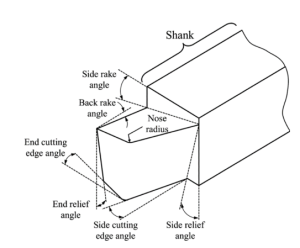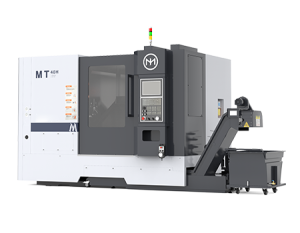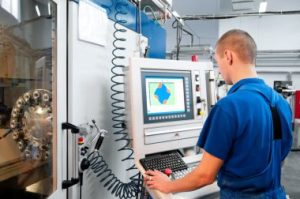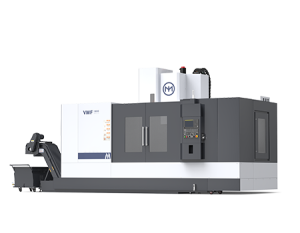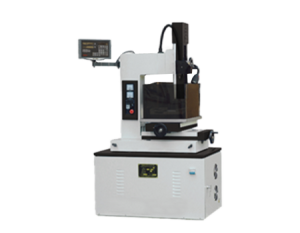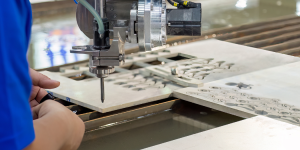When you need to drill into high-hardness materials, you may find that traditional drills fall short, while an EDM drilling machines are exactly what can meet this challenge. Using a high-frequency pulse discharge method, it achieves precise drilling without the need for cutting tools, performing excellently on hard alloys, stainless steel, and titanium. As a non-contact processing device, it enables efficient drilling of small, deep, and complex holes while maintaining high accuracy and surface quality.
When selecting an EDM drilling machine, you’ll notice that different models offer distinct advantages. For example, high-precision small-hole machines are ideal for micro-drilling, while versatile combination models are better suited for continuous production lines. Depending on your production scale and processing needs, you’ll want to balance performance with automation features and cost-effectiveness.
In the following sections, we’ll cover EDM drilling’s core principles, model classifications, key considerations for selection, and typical costs of use. We hope to help you understand this powerful machining tool better so that you can make the best choice for your specific production needs.
Principles of EDM Drilling Machines

The basic principle of an EDM (Electrical Discharge Machining) drilling machine uses high-frequency pulse discharge to generate intense heat on the surface of the material, which quickly melts and vaporizes it, forming small, precise holes. Here’s how the process works:
- Pulse Discharge: A pulse current flows between the electrode and the workpiece, producing a spark discharge.
- Localized Melting and Vaporization: The discharge zone experiences a sudden temperature rise, causing the targeted material to melt and vaporize instantly.
- Cooling and Debris Removal: During discharge intervals, the electrode cools, and the flushing fluid carries away the debris, ensuring a smooth hole wall and precise hole diameter.
This non-contact drilling approach greatly reduces tool wear, allowing the machine to achieve high-precision results on materials with extreme hardness, such as carbide and high-speed steel.
Types of EDM Drilling Machines
EDM drilling machines come in several types, each designed for specific materials and uses:
- Small-Hole EDM Drilling Machine: This type drills tiny holes in metal materials, with diameters typically ranging from 0.1mm to 3mm. It’s ideal for creating cooling holes in injection molds or micro-holes in nozzles.
- Large-Hole EDM Drilling Machine: This machine type handles larger-diameter holes, which are mainly needed in industries like aerospace and automotive, where cooling channels or oil passages are often required.
- High-Speed EDM Drilling Machine: Designed specifically for small holes that demand both precision and efficiency, this type is frequently used in the production of dense electronic components and conductive parts.

Each type suits a different range of applications, helping to meet specific needs in various industrial settings.
Materials and Process Advantages of EDM Drilling Machines
Applicable Material Range
EDM drilling machines work on a broad range of conductive metals, making them suitable for processing most metal materials. They are especially effective on high-hardness, challenging materials such as carbide, hardened steel, stainless steel, titanium alloys, and chromium-nickel alloys. This makes EDM drilling highly valuable in industries like mold-making, aerospace, and electronics. However, because EDM relies on conductivity, it does not work on non-metallic or insulating materials.
EDM Drilling Machines vs. Traditional Drilling Machines

The main difference between EDM drilling and traditional drilling lies in the machining method. Traditional drilling removes material through mechanical cutting, which generates cutting forces on the workpiece, so it struggles with high-hardness materials. In contrast, EDM drilling removes material through electrical discharge erosion, requiring almost no mechanical force, which is ideal for precise and micro-hole drilling. Here’s a quick comparison:
- Advantages of EDM Drilling Machines: EDM drilling suits high-hardness materials, applying almost no cutting force, and can process small, deep, and complex-shaped holes. It causes minimal workpiece deformation and delivers high accuracy.
- Advantages of Traditional Drilling Machines: Traditional drilling is more efficient for softer metals and non-metals. It offers faster processing for standard holes, making it suitable for batch production at generally lower costs.
Each approach serves unique purposes, allowing you to choose the right tool for your specific machining needs.
How to Select the Right EDM Drilling Machine: Key Parameters, Features, and Brand Recommendations
When choosing an EDM drilling machine, understanding its key parameters, required configurations, and brand options becomes essential to selecting the best model. Depending on your production needs, you can consider these aspects to ensure a cost-effective, efficient machine.
Key Parameters: Hole Diameter Range, Drilling Depth, and Efficiency
- Hole Diameter Range: The diameter range determines the machine’s precision in drilling. Typical models cover a diameter range between 0.1 to 3 mm. For ultra-small diameters (under 0.1 mm), choose a model that specializes in micro-drilling to meet high-precision requirements.
- Drilling Depth: When deep drilling is necessary, the depth-to-diameter ratio (depth relative to diameter) becomes a critical factor. Machines with a depth ratio over 30:1 suit deep-hole applications like those in aerospace and mold-making. Each model varies in deep-drilling capabilities, so select based on your specific job requirements.
- Drilling Efficiency: Drilling speed often depends on factors like electric current and electrode wear. It’s crucial to check the rated speed and electrode consumption rate of each machine to find one that optimizes efficiency for your projects.
Choosing the Right Model and Configuration for Your Needs
- Automation Level: Many modern EDM drilling machines offer various automation levels, from semi-automatic to fully automatic. Features like auto-electrode changing, auto-feed, and auto-positioning boost daily productivity. High automation suits large-scale production environments where speed is essential.
- Smart Controls and Digital Settings: High-end models often include smart control systems with programming and parameter memory functions for precise machining control. Digital settings enhance user convenience and maintain consistency during mass production. Some brands offer touchscreens or CNC systems for more precise parameter adjustments, perfect for high-precision manufacturing.
- Cooling System and Anti-Clogging Design: For deep-hole applications, cooling and anti-clogging designs are vital, especially during high-frequency operations. Many modern EDM drills include cooling systems and debris-removal designs to prevent clogging and overheating, ensuring stable, continuous operation.
Choosing a machine that balances these features will help you meet precision and production demands efficiently.
Common Issues, Operational Tips, and Maintenance Techniques for EDM Drilling Machines
As high-precision tools, EDM drilling machines can sometimes encounter specific issues during operation. To ensure they run smoothly and maintain quality results, operators should follow certain guidelines for troubleshooting, daily operation, and minimizing electrode and workpiece wear. Here are practical solutions for common issues, essential operational tips, and methods to reduce wear on electrodes and workpieces.
Common Issues and Solutions
- Clogging or Poor Debris Removal: During intensive use, EDM drilling machines may accumulate small debris in the electrode and drilled holes, causing clogs and reducing debris removal efficiency. This affects precision and hole quality. To prevent this, regularly clean the debris channel and keep the coolant flowing consistently. If clogging persists, increase the coolant pressure to ensure efficient debris removal.
- Rapid Electrode Wear: High electrode wear often occurs due to excessive current or improper parameter settings. If you notice this issue, first check if the current suits the material you’re working with, and adjust the settings according to the equipment manual. Using quality electrode materials also helps reduce wear and prolongs the electrode’s lifespan.
- Poor Surface Quality and Rough Finish: This issue often results from a high current or an improperly set discharge gap. For high-precision tasks, reduce the current and adjust the discharge gap to avoid excessive sparking on the surface. Also, ensure stable electrical conductivity to avoid fluctuations that could impact quality.
Daily Operational Tips
- Regular Cleaning and Maintenance: Routinely clean the coolant tank and debris removal system, especially after long machining sessions, as debris can accumulate in the cooling and debris channels. Consistent maintenance extends the machine’s lifespan and keeps it running optimally.
- Check Electrode Length and Workpiece Position: Periodically check electrode length during machining to avoid a short or overly worn electrode that may impact accuracy. Also, verify workpiece positioning and secure it with a clamp to prevent movement or vibration that could compromise results.
- Maintain a Stable Environment: Keep the working environment at a stable temperature and humidity level to protect the machine’s electronic components. Avoid sharing a power source with high-interference equipment, as this could lead to unstable voltage.
Ways to Reduce Electrode and Workpiece Wear
- Set Discharge Parameters Carefully: Electrode wear largely depends on discharge current and frequency. For initial processing, using a higher current can improve efficiency, but gradually reduce it to minimize electrode wear as work progresses. This balance helps reduce wear on both the electrode and workpiece.
- Choose an Appropriate Coolant: High-quality coolant enhances heat dissipation and debris removal, which prevents excessive heat on the electrode and workpiece surfaces, thus reducing wear. Select coolant suited to the specific materials and change it regularly for the best cooling effect.
- Use Quality Electrode Materials: Different electrode materials vary in durability. Copper or tungsten, for example, offer high wear resistance and are ideal for precision machining. Choosing the right electrode material extends electrode life and minimizes the need for frequent replacements, keeping the process efficient.
Following these guidelines ensures stable, precise results with your EDM drilling machine, helping to maintain both equipment and workpiece quality over the long term.
Cost Analysis for EDM Drilling Machines: Detailed Expenses on Consumables and Power

Operating an EDM drilling machine involves costs mainly from consumables, power usage, and equipment maintenance. Here is a breakdown of common costs associated with EDM drilling, helping you understand its economic value and better plan your budget.
Consumable Costs: Electrodes and Coolant
- Electrode Materials: EDM drilling electrodes typically use durable materials like copper or copper-tungsten. Copper electrodes cost around $20-30 per pound, while copper-tungsten electrodes, depending on the alloy ratio, range from $40-80 per pound. Monthly electrode costs generally fall between $100-300, varying by project needs.
- Coolant: Coolant is crucial for heat dissipation, debris removal, and cooling during EDM drilling. High-quality coolant costs about $10-20 per gallon, with monthly usage costs ranging between $50-150, depending on machining frequency and workpiece size. Maintaining clean coolant and regular replacement enhances machining efficiency and reduces equipment wear.
Power Costs: Electricity Consumption Estimates
- Electricity Consumption: Power usage depends on machine model and workload. Smaller EDM machines consume around 1-3 kWh per hour, while larger industrial machines consume about 3-5 kWh. Based on an industrial rate of $0.1-0.15 per kWh, hourly electricity costs range from $0.1 to $0.75.
- Average Monthly Power Costs: For operations running five days a week, eight hours a day, monthly power costs average between $100-300. Factories with heavy production might incur higher power costs, so it’s wise to evaluate power needs according to actual hours and workload.
Maintenance Costs: Regular Upkeep for Stable Performance
- Replacing Wear Parts: Parts like electrode holders, discharge spacers, and filters need replacing periodically, about every quarter or six months depending on usage. Each maintenance cycle costs between $100-300, with an annual maintenance budget of around $500-1,000.
- Lubrication and Cleaning Materials: Daily upkeep includes lubricants and cleaners, costing around $50-100 per year. Regular cleaning and lubrication extend machine life and reduce the chances of breakdown.
In total, monthly EDM drilling machine operating costs (including consumables, power, and maintenance) usually range between $300-750. Long-term, investing in high-quality consumables and regular maintenance can significantly reduce overall costs while boosting efficiency. For facilities with frequent use, a well-managed maintenance budget and cost-effective consumables help achieve quality results and control total operational costs.
Conclusion
EDM drilling machines are essential for modern manufacturing, excelling in efficiency and precision for high-hardness materials and fine holes. Our company focuses on delivering top-quality EDM equipment to meet strict demands for accuracy, durability, and value. With Minnuo machines, you gain reliable technical support and a productive machining experience, empowering you to reach higher production goals.







